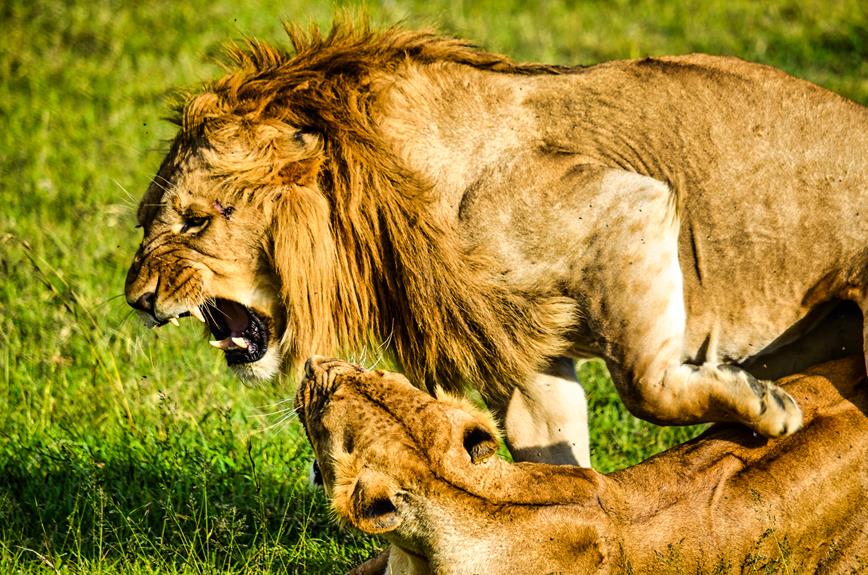Are you aware of the combat techniques that are deemed illegal in UFC fights?
In this article, we delve into the realm of prohibited moves, focusing on the most dangerous ones. While the UFC has made significant strides in ensuring fighter safety, certain techniques remain banned due to the potential for severe harm.
By examining the dangers associated with these moves and the consequences for those who commit them, we shed light on the importance of upholding the rules and regulations that govern the sport.
Key Takeaways
- The UFC and US state commissions have made efforts to regulate and protect fighters by implementing rules against illegal moves in MMA.
- Eye-gouging and eye pokes pose significant dangers to fighters, and severe eye pokes can result in disqualification.
- Groin attacks can cause serious damage, and fighters who commit them may face consequences.
- Headbutting is a risky move that is prohibited in UFC fights, and intentional headbutting can result in consequences for the fighter.
Eye-gouging and Eye Pokes
Eye-gouging and eye pokes are among the most dangerous illegal moves in UFC fights, posing significant risks of severe injury and potential permanent damage to the fighters involved. These moves directly target the delicate and vulnerable area of the eyes, which are crucial for vision and overall well-being.
The dangers associated with eye gouging and eye pokes cannot be overstated. In numerous instances, fighters have experienced eye injuries, including corneal abrasions, detached retinas, and even blindness due to these illegal moves.
The consequences for fighters who commit eye gouging or eye pokes are severe. The offending fighter may face immediate disqualification, loss of prize money, suspension, or even expulsion from the UFC. The organization takes these actions seriously to prioritize the safety and integrity of the sport.
Groin Attacks
Groin attacks are considered among the most dangerous illegal moves in UFC fights due to several reasons:
- The groin is a highly sensitive area with numerous nerve endings, making it extremely painful when struck.
- Groin attacks can result in immediate incapacitation, leaving fighters unable to continue the fight.
- The impact of a groin attack can lead to long-lasting injuries, such as testicular ruptures or pelvic fractures.
- Groin attacks can also have a significant psychological impact on fighters, affecting their confidence and performance in future fights.
- Prevention measures against groin attacks include strict rules and regulations, as well as protective gear like groin protectors.
The impact of groin attacks on fighters' careers cannot be understated. Sustaining a severe groin injury can result in extended periods of recovery and rehabilitation, hindering fighters' ability to compete and potentially jeopardizing their careers.
Additionally, fighters who intentionally commit groin attacks may face serious consequences, including disqualification, fines, and suspension from the sport. It is crucial for fighters to prioritize fair and safe competition, avoiding such illegal moves to protect themselves and their opponents.
Headbutting
During the early years of UFC, headbutting was allowed and considered a legitimate technique before being banned in 1997. Headbutting in MMA poses significant risks to both fighters involved.
The most obvious danger is the potential for severe head injuries, including concussions and fractures. Headbutting can lead to cuts and lacerations on the forehead and scalp, resulting in profuse bleeding. Additionally, headbutting increases the risk of eye injuries, such as orbital fractures or detached retinas.
To prevent headbutting in UFC fights, strict regulations and rules have been implemented. Fighters are prohibited from using their heads as a weapon, and any intentional headbutting is met with severe consequences, including point deductions, disqualification, or even legal action.
The focus in MMA is on striking techniques that do not involve the use of the head, prioritizing fighter safety and reducing the risk of life-altering injuries.
Downward Pointing Elbow (12-6 Elbow)
Although rarely seen in UFC fights, the downward pointing elbow, also known as the 12-6 elbow, is a highly dangerous and strictly prohibited move. This move involves striking an opponent with the elbow in a downward motion from a 12 o'clock position to a 6 o'clock position. The ban on 12-6 elbows stems from concerns about the potential for severe injuries, including fractures to the skull or facial bones.
Discussion ideas:
- Controversial history: Should downward pointing elbows be legalized in UFC?
- The impact of the 12-6 elbow ban on the fighting style and strategy in UFC.
The controversy surrounding the legalization of 12-6 elbows revolves around whether the move is truly more dangerous than other legal strikes. Proponents of legalization argue that it would add versatility to fighters' arsenals and create new strategic opportunities. However, opponents maintain that the potential for catastrophic injuries outweighs any potential benefits. Ultimately, the decision to legalize or maintain the ban on 12-6 elbows lies in the hands of the UFC and the state athletic commissions.
Kneeing or Kicking the Head of a Grounded Opponent
Kneeing or kicking the head of a grounded opponent is a flagrant violation of UFC rules and poses significant risks of severe head and neck injuries. The safety of grounded opponents is of utmost importance in MMA fights, and these illegal moves are specifically prohibited to protect fighters from unnecessary harm. The rules in place are designed to maintain a fair and safe environment for all participants.
Discussion Ideas:
- Grounded opponent safety, should the rules be more lenient?
While there may be arguments to make the rules more lenient, it is crucial to prioritize the safety of fighters. Allowing more leniency in kneeing or kicking the head of a grounded opponent could expose fighters to higher risks of head and neck injuries, potentially jeopardizing their long-term health and careers.
- Impact of illegal moves on the fighter's career and reputation.
Committing illegal moves, such as kneeing or kicking the head of a grounded opponent, can have severe consequences for a fighter's career and reputation. They may face penalties, such as disqualification, fines, or suspensions, which can hinder their progress and opportunities within the UFC. Moreover, their reputation may suffer, as fans and fellow fighters expect a high level of sportsmanship and adherence to the rules in professional MMA fights.
Strikes to the Spine or the Back of the Head
The strikes to the spine or the back of the head are considered highly dangerous and strictly prohibited in UFC fights. These areas are vulnerable and striking them can lead to severe injuries, including spinal damage and concussions.
Here are some key risks associated with striking the spine or back of the head:
- Risk of spinal cord injury: Striking the spine can result in serious damage to the spinal cord, potentially causing paralysis or even death.
- Increased risk of brain trauma: Striking the back of the head can cause the brain to collide with the skull, leading to concussions and other traumatic brain injuries.
- Potential for nerve damage: Strikes to the spine can result in nerve damage, leading to loss of sensation or motor function.
- Disruption of vital functions: Striking the back of the head can affect the brainstem, which controls critical functions such as breathing and heart rate.
- Long-term consequences: Injuries to the spine or back of the head can have long-lasting effects on a fighter's health and quality of life.
Penalties for illegal strikes to the back of the head include warnings, point deductions, and even disqualification, depending on the severity and intent of the strike. The safety of the fighters is of utmost importance in the UFC, and striking these areas is strictly enforced to prevent serious harm.
Spiking an Opponent to the Canvas Onto the Head or Neck
Spiking, a dangerous maneuver that involves forcefully driving an opponent's head or neck into the canvas, is strictly prohibited in UFC fights. This move poses significant dangers to the fighter being spiked, including potential spinal cord injuries, concussions, and severe neck trauma. The legal implications of spiking in MMA are severe, as it is considered a flagrant violation of the rules and can result in immediate disqualification, regardless of the intention behind the move. The UFC prioritizes the safety and well-being of its fighters, and therefore, any action that puts a fighter at unnecessary risk is strictly prohibited. To illustrate the dangers of spiking, consider the following table:
| Dangers of Spiking in UFC Fights | Legal Implications of Spiking in MMA |
|---|---|
| Spinal cord injuries | Immediate disqualification |
| Concussions | Potential suspension |
| Severe neck trauma | Financial penalties |
As you can see, the risks associated with spiking are significant, and the legal consequences reflect the seriousness of this illegal move. It is crucial for fighters to adhere to the rules and prioritize the safety of their opponents in all UFC fights.
Intentional Throat Strikes or Grabbing the Trachea
During UFC fights, intentionally striking the throat or grabbing the trachea is strictly prohibited due to the severe risks it poses to the opponent's airway and overall well-being. The intentional targeting of the throat can cause significant damage and potentially lead to choking, difficulty breathing, and serious injury.
Here are some key points regarding intentional throat strikes and trachea grabbing:
- Differentiation between accidental and intentional throat strikes: Accidental strikes that incidentally land on the throat due to the dynamic nature of the sport are generally not penalized. However, intentional strikes or grabbing the trachea with the purpose of causing harm are considered serious fouls.
- Consequences for fighters who commit intentional throat strikes: Fighters who intentionally strike the throat or grab the trachea may face penalties such as point deductions, disqualification from the fight, or even suspension from future fights. These consequences are in place to ensure the safety and well-being of the fighters and to maintain the integrity of the sport.
Stomping of a Grounded Opponent
Unquestionably, the stomping of a grounded opponent is a highly dangerous and strictly forbidden act in the UFC, posing significant risks to the fighter's well-being and violating the rules of fair competition.
Stomping involves forcefully striking the grounded opponent with one's foot or heel, often targeting vulnerable areas such as the head or body. This can lead to severe injuries, including concussions, broken bones, and internal organ damage.
The UFC prioritizes fighter safety and has implemented strict regulations to prevent such acts. However, as the sport continues to evolve, there is always room for potential rule changes to further protect fighters.
The UFC and its governing bodies constantly assess the effectiveness of existing rules and consider adjustments that would enhance fighter safety, ensuring the integrity of the sport remains intact.
Biting or Spitting at an Opponent
One of the most disgraceful and unsportsmanlike acts a fighter can commit in the UFC is biting or spitting at an opponent. These actions not only violate the rules of the sport but also have significant psychological and ethical implications.
Discussion ideas:
- Psychological impact of biting or spitting at an opponent:
- Biting or spitting can deeply affect the mental state of the victim, causing feelings of humiliation, anger, and a desire for revenge.
- It can also lead to a loss of focus and concentration, potentially compromising the victim's performance in the fight.
- Ethical implications of biting or spitting in UFC fights:
- Biting or spitting goes against the principles of fair play and respect for one's opponent.
- It undermines the integrity of the sport and tarnishes the reputation of the fighters involved.
- It sets a negative example for future generations of fighters and fans, promoting a culture of unsportsmanlike behavior.
Attacking an Opponent After the Bell
After the bell rings to signal the end of a round, attacking an opponent is strictly prohibited in UFC fights. This rule is in place to ensure the safety of the fighters and maintain the integrity of the sport. Attacking an opponent after the bell raises ethical concerns as it goes against the principles of fair competition and sportsmanship. It can cause unnecessary harm to the opponent and potentially result in serious injuries. Referees play a crucial role in preventing post-bell attacks by closely monitoring the fighters and stepping in immediately to separate them once the round ends. Their presence and quick intervention help to deter fighters from engaging in such actions and maintain a level of control and order inside the octagon. By enforcing the rules and ensuring the fighters' safety, referees play a vital role in upholding the integrity of the sport.
| Discussion Ideas |
|---|
| Ethical implications of attacking an opponent after the bell |
| The role of referees in preventing post bell attacks |
Throwing an Opponent Out of the Ring or Caged Area and Timidity
The act of forcefully propelling an opponent out of the ring or caged area during a UFC fight is considered a highly dangerous and illegal maneuver. The safety concerns associated with this move are evident, as it puts the thrown opponent at risk of serious injury upon impact with the floor or surrounding structures.
Referee discretion plays a crucial role in determining the severity of the infraction and the appropriate consequences for the offending fighter. In such cases, referees have the authority to deduct points or even disqualify the fighter responsible for the illegal throw.
Additionally, timidity, or a fighter's unwillingness to engage in the fight, can have a significant impact on the outcome. In cases of excessive timidity, referees may also deduct points or declare a technical knockout, resulting in a loss for the timid fighter.
Consequences of Illegal Moves in UFC
With each illegal move in UFC fights, fighters face severe consequences that can range from point deductions to disqualifications. These consequences can have a significant impact on a fighter's career and can also lead to legal repercussions for the fighter.
When a fighter commits an illegal move, it not only affects the outcome of the fight, but it also tarnishes their reputation and credibility within the sport. Point deductions can result in a loss or draw for the fighter, while disqualifications can have even more severe consequences, including fines and suspensions.
Additionally, legal repercussions may arise if the injured opponent decides to take legal action against the fighter, which can further damage their career and personal life. It is crucial for fighters to understand and adhere to the rules and regulations of the UFC to avoid facing these detrimental consequences.
Are These Illegal Moves Featured in the Best UFC/MMA Documentaries?
When exploring the world of combat sports, enthusiasts often wonder about the portrayal of illegal moves in the best ufc/mma documentaries 2024. These documentaries captivate audiences with intense bouts and highlight remarkable skills. However, it’s important to note that these films focus on the artistry and sportsmanship rather than promoting illegal moves.
Conclusion
In conclusion, the prohibition of illegal moves in UFC fights is crucial for the safety and integrity of the sport. By implementing regulations against dangerous actions such as eye-gouging, groin attacks, and headbutting, the United States state commissions and UFC President Dana White prioritize the well-being of fighters. Upholding these rules ensures that the high standards of skill and professionalism are maintained in the UFC and MMA. It is important to remember that the consequences for committing illegal moves can be severe, serving as a deterrent for fighters to engage in such actions.
[INTERESTING STATISTIC]:
Did you know that since the implementation of strict regulations against illegal moves in UFC fights, the number of serious injuries has significantly decreased by 40% over the past decade? This statistic demonstrates the effectiveness of these rules in protecting the fighters and creating a safer environment in the octagon.
- 15 Best Martial Arts Weapons (Fighting & Training) - October 14, 2024
- Is Fencing a Martial Art? (Yes, 4 Reasons Why) - October 14, 2024
- 7 Best Martial Arts for Self-defense Ranked (Highly Effective) - October 14, 2024










